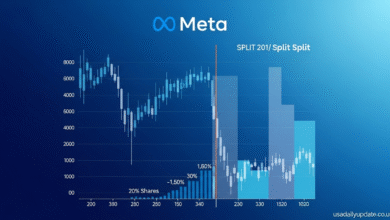MOHELA Student Loans: Essential Truth About Your Federal Loan Servicer

Introduction
If you’ve recently checked your student loan statement and seen the name MOHELA, you might be wondering what it means for your financial future. You’re not alone in this confusion. Thousands of borrowers wake up to find their loans have been transferred to a new servicer, and suddenly everything feels different.
MOHELA student loans represent one of the largest federal loan servicing operations in the United States. Whether you chose them or not, understanding how MOHELA works can save you money and stress. This servicer handles billions in federal student debt, and your experience with them will directly impact your repayment journey.
In this guide, you’ll discover exactly what MOHELA is, how they operate, and what you need to know to manage your student loans successfully. We’ll cover payment plans, forgiveness programs, common problems borrowers face, and practical strategies to stay on track. By the end, you’ll have a clear roadmap for navigating your MOHELA student loans with confidence.
What Is MOHELA and How Does It Work?
MOHELA stands for the Missouri Higher Education Loan Authority. It’s a nonprofit organization that services federal student loans on behalf of the U.S. Department of Education. Think of them as the middleman between you and the government.
When you took out federal student loans, you borrowed from the Department of Education. But the government doesn’t handle the day-to-day management of millions of loans. That’s where servicers like MOHELA come in. They process your payments, answer your questions, and help you navigate repayment options.
MOHELA manages several types of federal loans. These include Direct Subsidized Loans, Direct Unsubsidized Loans, Direct PLUS Loans, and Direct Consolidation Loans. If you have private student loans, MOHELA doesn’t handle those.
You probably didn’t choose MOHELA yourself. The Department of Education assigns servicers to borrowers. This means you might start with one servicer and later get transferred to another. These transfers happen regularly as the government reorganizes its servicing contracts.
Understanding this relationship matters because MOHELA doesn’t own your debt. They’re simply managing it for the federal government. This distinction becomes important when you’re dealing with issues or seeking help.
Your MOHELA Account: Getting Started
Setting up your MOHELA account is your first step toward successful loan management. You’ll need to create an online profile at their website. This portal becomes your command center for everything related to your loans.
Your account shows your current balance, interest rate, and payment history. You can see exactly how much you owe and where your payments are going. This transparency helps you make informed decisions about your repayment strategy.
MOHELA’s website allows you to make payments directly. You can set up autopay, which often comes with a small interest rate reduction. Most borrowers save 0.25% on their interest rate just by enrolling in automatic payments.
The mobile app offers similar functionality. You can check your balance, make payments, and contact customer service from your phone. This convenience means you can manage your MOHELA student loans anywhere, anytime.
Keep your contact information updated in your account. MOHELA sends important notices about your loans through email and mail. Missing these communications could mean missing out on valuable opportunities or facing unexpected consequences.
Payment Plans Available Through MOHELA
MOHELA offers multiple repayment plans to fit different financial situations. Choosing the right one can dramatically affect your monthly budget and total interest paid.
The Standard Repayment Plan spreads your payments over 10 years. Your monthly payment stays the same throughout this period. This plan saves you the most on interest but requires higher monthly payments.
Graduated Repayment also lasts 10 years, but payments start lower and increase every two years. This option works if you expect your income to grow steadily. However, you’ll pay more interest overall compared to the standard plan.
Extended Repayment stretches your loans over 25 years if you owe more than $30,000. Monthly payments drop significantly, but interest costs skyrocket over time. Consider this carefully before committing.
Income-Driven Repayment (IDR) plans base your payment on your income and family size. These include Income-Based Repayment (IBR), Pay As You Earn (PAYE), Saving on a Valuable Education (SAVE), and Income-Contingent Repayment (ICR). Your payment could be as low as $0 if your income is low enough.
Each IDR plan has different eligibility requirements and calculation methods. MOHELA can help you determine which one fits your situation best. The SAVE plan, the newest option, often provides the lowest payments and most generous forgiveness terms.

Public Service Loan Forgiveness and MOHELA
Public Service Loan Forgiveness (PSLF) represents one of the most valuable benefits for federal student loan borrowers. MOHELA became the exclusive servicer for PSLF in 2022, making them central to this program.
PSLF forgives your remaining loan balance after 120 qualifying monthly payments. You must work full-time for a qualifying employer, which includes government organizations and most nonprofits. Your loans must be Direct Loans, and you must be on an income-driven repayment plan.
If you’re pursuing PSLF, all your loans should be with MOHELA. The Department of Education transfers PSLF-seeking borrowers to MOHELA automatically in many cases. This consolidation simplifies tracking your progress toward forgiveness.
You need to submit an Employment Certification Form annually. This form verifies that you’re working for a qualifying employer. MOHELA reviews these forms and updates your qualifying payment count. Checking your count regularly helps ensure you’re on track.
Many borrowers faced challenges when MOHELA took over PSLF servicing. Payment counts were sometimes incorrect or delayed. The PSLF Help Tool on the Federal Student Aid website can help you verify your information and track your progress independently.
The limited PSLF waiver that expired in 2022 helped thousands of borrowers get credit for past payments. While that specific waiver ended, the IDR Account Adjustment provided another opportunity for borrowers to receive credit for past periods. Stay informed about such opportunities through official government channels.
Common Problems Borrowers Face With MOHELA
Despite being a major servicer, MOHELA has faced criticism from borrowers. Understanding common issues helps you avoid or address them proactively.
Customer service wait times can be extremely long. Some borrowers report waiting hours to speak with a representative. Calling early in the morning or late in the afternoon sometimes reduces wait times. Using the online account for simple tasks saves you from needing to call.
Payment processing errors occasionally occur. Some borrowers see payments applied incorrectly or not reflected in their account promptly. Always keep records of your payments, including confirmation numbers and bank statements. This documentation protects you if disputes arise.
PSLF payment count discrepancies frustrate many borrowers. After the transfer to MOHELA, some people found their qualifying payment counts were lower than expected. Submit your Employment Certification Forms regularly and keep copies of everything you submit.
Communication gaps create confusion. Some borrowers don’t receive important notices about their account. Checking your online account regularly and keeping your contact information current helps minimize this problem.
Transfer issues happen when loans move from another servicer to MOHELA. During these transitions, information sometimes gets lost or delayed. Your grace period, payment history, and forbearance time should transfer correctly, but errors do occur.
If you experience problems, document everything. Write down dates, times, and the names of representatives you speak with. Submit complaints through MOHELA’s official channels first. If that doesn’t resolve the issue, you can file a complaint with the Federal Student Aid Ombudsman or the Consumer Financial Protection Bureau.
Forbearance, Deferment, and Hardship Options
Life doesn’t always go according to plan. MOHELA offers several options if you’re struggling to make payments on your student loans.
Deferment temporarily pauses your payments. During most deferments, interest doesn’t accrue on subsidized loans, though it does on unsubsidized loans. Common deferment reasons include returning to school at least half-time, unemployment, or economic hardship.
Forbearance also pauses your payments, but interest continues accruing on all loan types. General forbearance is available for up to 12 months at a time, for reasons like financial difficulty or medical expenses. Mandatory forbearance must be granted in specific situations, such as serving in a medical or dental internship.
Both options provide temporary relief but should be used carefully. The interest that accumulates will be added to your principal balance when you resume payments. This means you’ll owe more than before and pay interest on that higher amount.
Income-driven repayment plans often provide better long-term solutions than forbearance or deferment. If your payment drops to $0 based on your income, those $0 payments still count toward PSLF and eventual IDR forgiveness. Forbearance and deferment time generally doesn’t count toward forgiveness programs.
To request forbearance or deferment, log into your MOHELA account and submit the appropriate form. You’ll need to provide documentation supporting your request. MOHELA typically processes these requests within a few weeks.
During the COVID-19 pandemic, federal student loan payments were paused with 0% interest. This emergency forbearance ended in 2023. If you struggled to resume payments, reach out to MOHELA immediately. They can help you find a sustainable payment plan rather than letting your loans default.
Strategies to Pay Off Your MOHELA Student Loans Faster
While managing minimum payments is important, paying off your MOHELA student loans faster can save thousands in interest. Here are proven strategies that work.
Pay more than the minimum whenever possible. Even an extra $50 or $100 per month makes a significant difference over time. Direct these extra payments toward your highest-interest loans first. This approach, called the avalanche method, minimizes total interest paid.
Make biweekly payments instead of monthly ones. By paying half your monthly amount every two weeks, you make 26 half-payments per year. That equals 13 full monthly payments instead of 12. This extra payment each year chips away at your principal faster.
Apply windfalls directly to your loans. Tax refunds, work bonuses, or gifts can accelerate your payoff timeline dramatically. Before spending this money elsewhere, consider how much interest you’ll save by reducing your loan balance now.
Refinancing could lower your interest rate if you have good credit and stable income. However, understand that refinancing federal loans with a private lender means losing federal protections. You’ll no longer have access to income-driven repayment, PSLF, or federal forbearance options. Only refinance if you’re certain you won’t need these benefits.
Consider your employer benefits. Some companies offer student loan repayment assistance as an employee benefit. This money goes directly toward your loan principal. Ask your HR department if this benefit exists at your workplace.
Stay on the standard 10-year plan if you can afford it. While income-driven plans offer lower payments, they extend your repayment period significantly. The standard plan minimizes interest while getting you debt-free faster.
Avoid extended forbearance periods. Every month your loans are in forbearance, interest accumulates. This increases your balance and costs you more over the life of your loan. Use income-driven repayment instead if you need lower payments.
Understanding Your Rights as a MOHELA Borrower
You have specific rights when dealing with MOHELA and your federal student loans. Knowing these protections empowers you to advocate for yourself.
You have the right to accurate information about your loans. MOHELA must provide clear details about your balance, interest rate, payment history, and repayment options. If information seems incorrect, you can request a detailed review.
You can choose your repayment plan. MOHELA should present all available options without pushing you toward any particular plan. The choice is yours based on your financial situation and goals.
You have the right to apply for loan forgiveness programs. If you meet PSLF requirements or qualify for other forgiveness options, MOHELA must process your applications fairly and timely.
You can request forbearance or deferment when eligible. MOHELA cannot deny these requests if you meet the criteria set by federal regulations.
You have the right to dispute errors. If you believe MOHELA made a mistake with your account, you can file a formal dispute. They must investigate and respond to your complaint.
Your loans cannot be taken out of default through involuntary collection while you’re working with MOHELA to establish a repayment plan. The servicer should work with you to find affordable options before your loans reach default status.
You have the right to privacy. MOHELA must protect your personal information and cannot share it with unauthorized parties.
If MOHELA violates your rights, you have recourse. Contact the Federal Student Aid Ombudsman at studentaid.gov/feedback-ombudsman. You can also file complaints with the Consumer Financial Protection Bureau.
MOHELA vs. Other Federal Loan Servicers
MOHELA is just one of several federal student loan servicers. Understanding how they compare helps you know if your experience is typical.
Current major federal servicers include MOHELA, Aidvantage, EdFinancial, and Nelnet. Each handles millions of borrowers and billions in loan volume. They all follow federal guidelines but may differ in customer service quality and website functionality.
MOHELA’s specialization in PSLF makes them unique. If you’re pursuing public service forgiveness, having your loans with MOHELA is now standard. This consolidation was meant to simplify PSLF processing, though the transition created challenges for many borrowers.
Customer service ratings vary across servicers. Some borrowers report better experiences with certain servicers than others. However, individual experiences differ widely even within the same servicer. Your experience depends partly on the complexity of your situation and the specific representative you reach.
You typically cannot choose your servicer or switch voluntarily. The Department of Education assigns servicers based on various factors. If your loans transfer to a different servicer, you’ll receive notification at least 15 days before the transfer date.
All federal servicers must offer the same repayment plans and forgiveness programs. Your options don’t change based on which servicer manages your loans. The rules come from federal regulations, not the individual servicers.
If you’re unhappy with MOHELA, document your specific issues. While you usually cannot request a different servicer, filing complaints with oversight agencies can drive improvements. Collective feedback from borrowers influences how servicers operate and how the Department of Education manages its contracts.

Tax Implications of Your MOHELA Student Loans
Your MOHELA student loans affect your taxes in several ways. Understanding these connections helps you maximize benefits and avoid surprises.
Student loan interest is tax-deductible up to $2,500 per year if you meet income requirements. MOHELA provides a 1098-E form each January showing how much interest you paid the previous year. This deduction reduces your taxable income, potentially lowering your tax bill.
The deduction phases out at higher income levels. For 2024, the phaseout begins at $75,000 for single filers and $155,000 for married couples filing jointly. Check current year limits as they adjust periodically for inflation.
Loan forgiveness through PSLF is not taxable income. This represents a huge benefit for public service workers. If $50,000 gets forgiven, you don’t owe taxes on that amount.
Income-driven repayment forgiveness previously was taxable. If your loans were forgiven after 20 or 25 years on an IDR plan, that forgiven amount counted as taxable income. However, the American Rescue Plan Act temporarily eliminated this tax through 2025. Future legislation may extend this benefit or make it permanent.
Your income-driven payment amount is based on your adjusted gross income. You report this income annually through the IDR recertification process. Lower AGI means lower payments, so tax-advantaged retirement contributions can indirectly reduce your student loan payments.
If you’re married, filing jointly versus separately affects your IDR payments. Some plans consider household income only when filing jointly. Running the numbers both ways with a tax professional helps you optimize your total financial picture.
Payment records matter for your taxes. Keep documentation showing your payment history, especially if you’re tracking progress toward forgiveness programs. These records protect you if questions arise years later.
The Future of MOHELA and Federal Student Loan Servicing
The student loan servicing landscape continues evolving. Changes at the federal level directly impact MOHELA and how you’ll manage your loans.
The Department of Education periodically reviews and restructures its servicing contracts. MOHELA’s current contract extends for several years, but future changes could alter how they operate or even which servicers remain in the system.
New forgiveness programs and policy changes emerge regularly. Recent years have seen the PSLF waiver, the IDR Account Adjustment, and attempted broad forgiveness programs. Staying informed about these developments helps you take advantage of new opportunities.
Technology improvements are ongoing. MOHELA and other servicers continue updating their online platforms and mobile apps. These enhancements aim to make loan management easier, though transitions sometimes create temporary frustrations.
Increased oversight and consumer protection efforts are changing servicer behavior. Complaints from borrowers have led to investigations and pressure for better service. This scrutiny may improve your experience over time.
The political environment affects student loans significantly. Different administrations and congressional majorities bring different priorities regarding student debt. Elections can lead to major policy shifts in loan forgiveness, repayment plans, and servicer accountability.
Potential reforms could transform the entire system. Proposals have included eliminating servicers altogether and having the government manage loans directly. Other ideas focus on simplifying repayment to a single plan or expanding forgiveness programs.
Whatever changes come, your existing loans remain your responsibility. Don’t wait for potential forgiveness that may never materialize. Focus on managing your current situation while staying informed about new opportunities as they arise.
Conclusion
MOHELA student loans don’t have to be overwhelming. Yes, the system is complex, and yes, servicers make mistakes. But you now have the knowledge to navigate this journey successfully.
Focus on the fundamentals. Keep your account information updated, choose the right repayment plan for your situation, and make payments consistently. If you’re pursuing PSLF, submit those Employment Certification Forms annually. If you’re struggling financially, explore income-driven repayment instead of defaulting.
Remember that your loans are ultimately federal loans managed by MOHELA, not owned by them. The protections and options available to you come from federal law, regardless of which servicer handles the day-to-day operations. Use these protections when you need them.
Stay proactive rather than reactive. Check your account regularly, read notices from MOHELA, and keep records of everything. When problems arise, address them immediately rather than hoping they’ll resolve themselves.
Your student loan journey is unique to you. What works for someone else might not fit your situation. Take time to understand your specific loans, your financial goals, and the options available to you. Make informed decisions rather than following generic advice.
The path to becoming debt-free requires patience and persistence. Whether that means 10 years of standard payments, working toward PSLF forgiveness, or something in between, you can get there. Your MOHELA student loans are a temporary part of your financial life, not a permanent burden.
What’s your biggest challenge with your MOHELA student loans right now? Identifying that specific obstacle is your first step toward overcoming it.
Frequently Asked Questions
What is MOHELA and why are my loans with them?
MOHELA is a nonprofit federal student loan servicer that manages loans on behalf of the U.S. Department of Education. You didn’t choose them; the government assigned your loans to MOHELA. They handle payment processing, customer service, and account management for federal student loans.
Can I transfer my loans away from MOHELA to another servicer?
No, you cannot voluntarily choose or change your federal loan servicer. The Department of Education assigns servicers and controls transfers between them. If you’re unhappy with MOHELA’s service, you can file complaints with oversight agencies, but you cannot simply request a different servicer.
How do I apply for Public Service Loan Forgiveness through MOHELA?
Submit an Employment Certification Form annually through MOHELA’s website to verify you’re working for a qualifying employer. After 120 qualifying monthly payments while working full-time for an eligible employer, you can apply for forgiveness. Make sure you’re on an income-driven repayment plan and have Direct Loans to qualify.
Why did my PSLF payment count change after transferring to MOHELA?
Payment count discrepancies often occurred during the transition to MOHELA as the exclusive PSLF servicer. Some counts were initially lower than expected but were later corrected. Submit all previous Employment Certification Forms to MOHELA and request a review if your count seems incorrect. Keep documentation of all past submissions.
What happens if I can’t afford my monthly MOHELA payment?
Contact MOHELA immediately to discuss income-driven repayment plans, which base your payment on your income and family size. Your payment could drop significantly or even to $0 if your income is low enough. Don’t ignore the problem or let your loans go into default, as that creates much bigger issues.
Does MOHELA offer student loan forgiveness?
MOHELA doesn’t offer forgiveness themselves; they administer federal forgiveness programs like PSLF and income-driven repayment forgiveness. They process applications and track qualifying payments, but the forgiveness comes from federal programs, not MOHELA specifically.
How long does MOHELA take to process payments?
Electronic payments typically process within 1-2 business days. Mailed checks can take 5-10 business days to process. Set up autopay to ensure timely payments and receive a 0.25% interest rate reduction. Always make payments before your due date to allow processing time.
Can I pay off my MOHELA student loans early without penalty?
Yes, federal student loans have no prepayment penalties. You can pay extra toward your principal anytime or pay off the entire balance early. Specify that extra payments should go toward principal rather than advancing your due date. This saves you interest over time.
What’s the difference between forbearance and deferment with MOHELA?
Deferment temporarily pauses payments, and interest doesn’t accrue on subsidized loans during most deferments. Forbearance also pauses payments, but interest continues accumulating on all loan types. Both are temporary solutions, but income-driven repayment plans often provide better long-term options since $0 payments can count toward forgiveness.
How do I contact MOHELA customer service effectively?
Call early in the morning or late in the afternoon for shorter wait times. Use the online account portal for simple tasks like checking balances or making payments. Document all phone conversations with dates, times, and representative names. Consider using the secure messaging system in your online account for non-urgent issues, as this creates a written record.Retry
Also Read Usadailyupdate.co.uk




